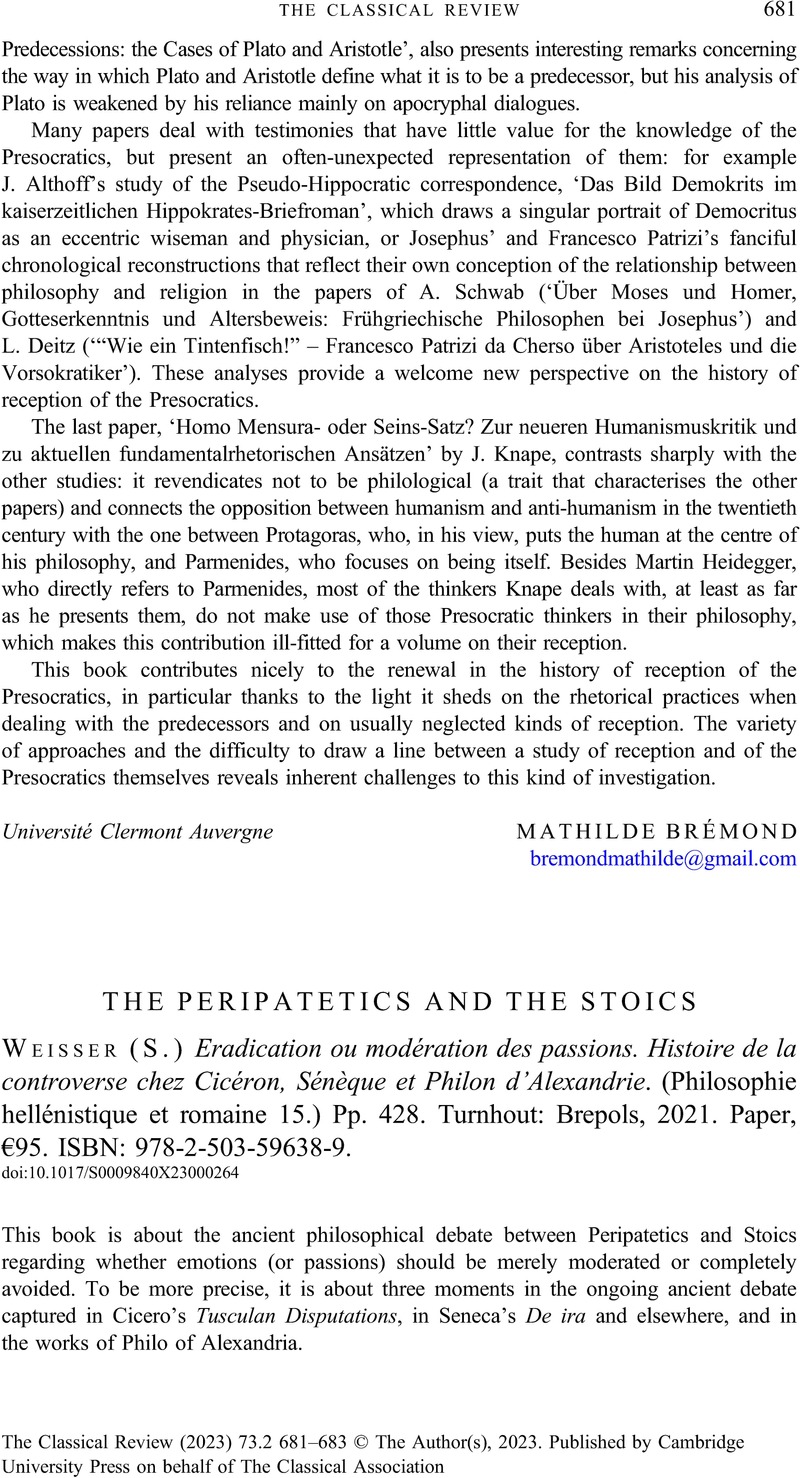No CrossRef data available.
Article contents
THE PERIPATETICS AND THE STOICS - (S.) Weisser Eradication ou modération des passions. Histoire de la controverse chez Cicéron, Sénèque et Philon d'Alexandrie. (Philosophie hellénistique et romaine 15.) Pp. 428. Turnhout: Brepols, 2021. Paper, €95. ISBN: 978-2-503-59638-9.
Review products
(S.) Weisser Eradication ou modération des passions. Histoire de la controverse chez Cicéron, Sénèque et Philon d'Alexandrie. (Philosophie hellénistique et romaine 15.) Pp. 428. Turnhout: Brepols, 2021. Paper, €95. ISBN: 978-2-503-59638-9.
Published online by Cambridge University Press: 29 March 2023
Abstract
An abstract is not available for this content so a preview has been provided. Please use the Get access link above for information on how to access this content.

- Type
- Reviews
- Information
- Copyright
- Copyright © The Author(s), 2023. Published by Cambridge University Press on behalf of The Classical Association



